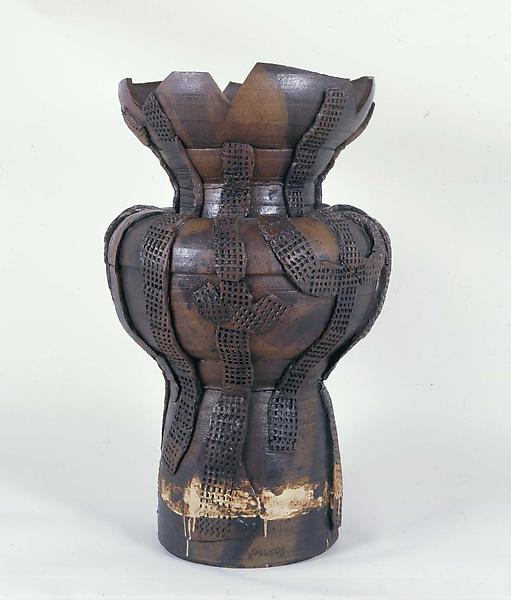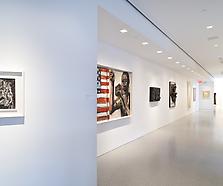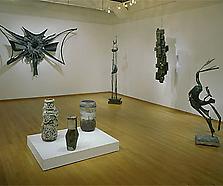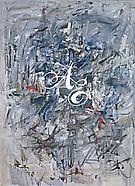“I brush color on to violate the form, and it comes out a complete new thing, which involves a painting concept on a three-dimensional surface, a new idea. These things are exploding, jumping off. I wanted to pick up on that energy. That’s different from decorating the surface, which enhances form….I wanted to change the form, get more excitement going.” *
Born in Bozeman, Montana in 1924, Peter Voulkos was one of five children in his close-knit family. His parents were Greek immigrants, and during the Depression, Voulkos held several jobs in order to help the family survive. In 1942, Voulkos finished high school and made his way to Oregon, where he found work making floor molds for engine castings and casting iron fittings for American Liberty ships. In 1943, he was drafted into the US Army Air Corps and spent most of the war in the Pacific theater. With funding from the GI Bill, Voulkos enrolled in courses at Montana State College (now University) in his hometown of Bozeman after the war. In 1951, he received his bachelor’s degree and used the remainder of his GI Bill funding to earn a Master of Fine Arts degree from the California College of Arts and Crafts in Oakland, which he completed in 1952. That same year, Voulkos participated in his first gallery exhibition, and in 1953, he traveled to New York, where he frequented the Club and the Cedar Tavern, meeting artists such as Franz Kline, Jack Tworkov, Philip Guston, and Robert Rauschenberg. That same year, Voulkos’s sculpture was included in two important New York exhibitions—Good Design at the Museum of Modern Art (MoMA) and Designer Craftsmen, USA 1953 at the Brooklyn Museum, where he was awarded the juried exhibition’s top prize. In 1954, he began teaching at the Los Angeles County Art Institute (now Otis), where he eventually established a ceramics department.
In the mid-1950s, after his time in New York, Voulkos began to move away from the throwing and glazing skills he had perfected as a student. Embracing abstract expressionism’s emphasis on the gestural in art, Voulkos attempted to make room for the spontaneous in ceramic sculpture, marking, altering, and destroying his works to produce new forms. By 1958, he was creating work on a much larger scale, assembling wheel-thrown pottery elements into eight-foot constructions that he coated with an epoxy resin, turning the artwork itself into an analysis of the process of pottery-making. Voulkos’s radical deconstruction of the traditional ceramics process and form would inspire countless ceramicists who followed, but in 1959, the iconoclastic thrust of his work disturbed the conservative administration at the LA County Art Institute, and he was fired from teaching there.




